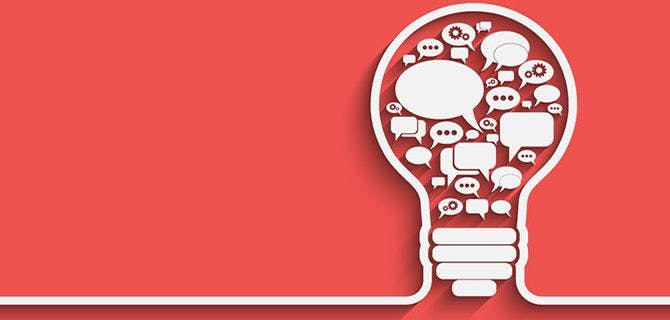Most of us can remember a time when we wrote reports by hand or with a typewriter and when we had to go to the library to look something up in hardcopy books. I count myself fortunate that the personal computer came along relatively early in my education. The internet followed soon after, evolving from […]

Most of us can remember a time when we wrote reports by hand or with a typewriter and when we had to go to the library to look something up in hardcopy books. I count myself fortunate that the personal computer came along relatively early in my education. The internet followed soon after, evolving from something you used over a phone line, into the Wi-Fi-powered web we know today. Over the past two decades, the rise of internet (and mobile phones) has irreversibly changed the way people communicate.
Science communication publications have been around since the 17th century and have gone through some remarkable developments. With the rise of the digital age, publication speed and discoverability of research papers has improved dramatically, but there’s still plenty of room for improvement. During the 2016 SciFinder Future Leaders program and the ACS National Meeting this past August, I met an amazing group of people: Other Future Leaders participants, people at CAS, scientists and science communicators from all over the world. We were given the chance to talk about how science communication works and how it could be improved. The experience made me realize that so much amazing work has already been accomplished on the road to modernizing science communication. We need to keep this up. The journey isn’t over yet.
I would like to focus on two points, namely the digitization of data and way we communicate with other scientists.
If we are past the time of writing reports by hand or with the typewriter, why do most scientists still record their daily work in a hardcopy lab notebook? As part of the SciFinder Future Leaders program, we were offered a deeper insight into the intricacies of how scientific search engines, like SciFinder, actually work. To make publications easily searchable for the scientists, the workforce at CAS has to redraw chemical structures, identify key words and index the papers into specific categories. So when a researcher writes a paper, it gets converted from handwritten text in a lab book, to digital structures, images and text, and then into one integrated document. After which the paper gets published and subsequently dissected by CAS back into structures, images and text. It is a lengthy process, but with new technologies it is possible to skip a few steps.
Since I started using a digital lab book, I cannot imagine going back to a hardcopy version. The digital lab book saves valuable time, making my research easily searchable and sharable. Besides that, writing the experimental section of paper, has become a few seconds of copy-paste. The digital lab book software is evolving every day, and even software that is not specifically made for scientific lab book keeping gives you most of the features you need. In the near future we should progress to a point where you can attach all experiments (with both positive and negative results) you performed for a publication in a few clicks.
Communicating science is an essential part of our job as researchers. But in the current publishing system, the communication is quite one sided. What does this mean? One writes a paper, other researchers read it – and that is normally the end of the communication. Even if there are aspects of the research that are unclear or there are problems with reproducibility. It doesn’t happen often that people actually contact the corresponding author to discuss the details further. A key example of how we overcome this hurdle is attending scientific conferences. Nothing beats the efficiency of sitting across a table from someone to discuss research in detail. But not every scientist is able to travel as often and as far to attend all relevant conferences.
It makes me wonder. If we can share a picture of food (or characterful cats) to perfect strangers from all over the world, why can’t we make this process just as open and easy for scientific research?
The first time I was contacted via Twitter by another early-career scientist about my paper, I was a bit shocked, but very happy to help. The query was resolved quickly, and I was struck by how useful it would be to always have these really short and informal lines of communication open. Moving the current forms of science communication to more of a two-way street could result in a more complete and honest presentation of scientific results.
To conclude, we are well on our way to getting science communication caught up with the dramatic advances in general communication from past decades. If we all join in, the next decade will bring science communication to a whole new level, ready for the many generations to come – ready for the future leaders in science.